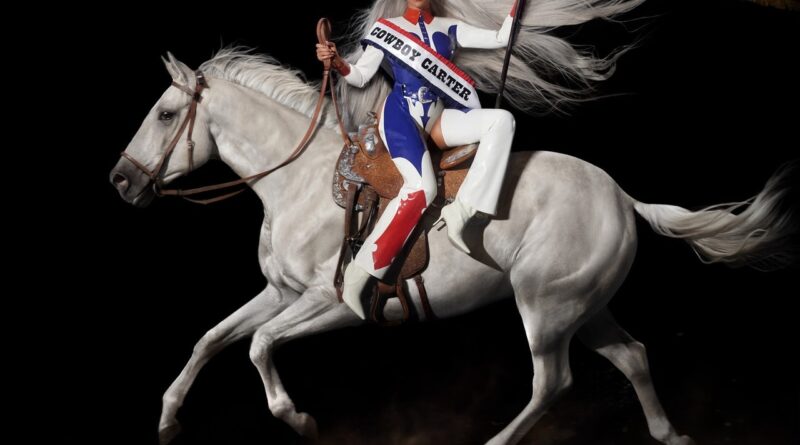Beyonce’s New Album Cowboy Carter and the History of Black Country Music
With the drop of “Texas Hold ‘Em” and “16 Carriages” in February, Beyoncé staked her claim in country music. Within 10 days of its release, “Texas Hold ‘Em” became a #1 charting song on Billboard’s Hot Country Songs, making her the first Black woman to reach the coveted top spot in the genre.
Despite this achievement, there’s a debate about whether Beyoncé’s sound is country, not unlike the conversations that swirled around Lil Nas X’s “Old Town Road” in 2019. However, there is actually a long tradition of Black country music, from the origin of the banjo to the many Black artists who built their careers in the country music genre. If anything, Beyoncé’s new album is bringing attention to this often overlooked history of country music.
The segregation of sound
Although Black history, culture, and artists have always been part of country music, Black performers often receive less airtime. According to a report from SongData, only 1.5% of the 2,100 artists played on country radio stations between 2002 and 2020 were Black — compared to the 98% of artists who were white. Even Beyoncé was affected by this divide. Pop radio stations played “Texas Hold ‘Em” 49 times two days after its release, while country stations only played it twice, according to CNBC.
This lack of representation can be explained in part by the delineation of distinct genres of music. Although music often blurs the lines between genres (such as “indie folk” or “pop rock”) in reality, the development of genre is tied to how record labels marketed and distributed music — and it affects how music is understood and shared today.
When the music recording industry began expanding in the early 20th century, record producers targeted audiences based on their perceived preferences, leading to the marketing of different genres. Two major genres emerged: “hillbilly music” (later known as country music), which was made by white artists and marketed to white listeners, and “race records” (later known as blues or R&B), which was made by Black artists and marketed to Black listeners. However, these two separate genres often shared similar styles and content. So while there were Black artists who played music that fit into the “country” category, they were not marketed in that way.
For example, on the 1927 Bristol Sessions, a series of recordings that helped kickstart commercial country music, El Watson — the only Black artist present — performed two harmonica pieces. All the other songs released from the Sessions were billed as “hillbilly music,” while Watson’s sold under “race records,” despite similarities to other harmonica recordings by white artist Henry Whitter.
Despite this early segregation of sound and the use of genres in marketing, music works very differently on the ground. Musical styles borrow and develop from each other, artists create their own versions of songs and express themselves in different genres, and ultimately, new music is made. It is not uncommon for artists to identify with and play music that falls within different genres, and listeners rarely enjoy just one style of music. Contemporary artist Darius Rucker rose to fame with the rock band Hootie and the Blowfish. He didn’t release his first country album until six years after his first solo album, yet he’s widely known as a country artist today. Cowboy Carter isn’t even Beyoncé’s first country project: her 2006 song “Irreplaceable” was originally envisioned as a country ballad, and she performed a bluegrass-inspired version with the duo Sugarland at the 2007 American Music Awards. The Texas native also performed her song “Daddy Lessons” with The Chicks at the 2016 Country Music Awards.
Black musical traditions
Key elements of country music also have Black origins, such as the banjo. In Beyoncé’s “Texas Hold ‘Em,” the banjo is played by Pulitzer Prize and MacArthur Fellowship honoree Rhiannon Giddens. In addition to her musical talent, Giddens has been instrumental in illuminating the history of the banjo and Black contributions to early country music. In 2019, Giddens collaborated with three other Black female artists — Amythyst Kiah, Leyla McCalla, and Allison Russell — on Songs of Our Native Daughters, co-produced with Smithsonian Folkways and the National Museum of African American History and Culture. The project explores “African American stories of struggle, resistance, and hope,” along with the history of the banjo and Black folk music.



